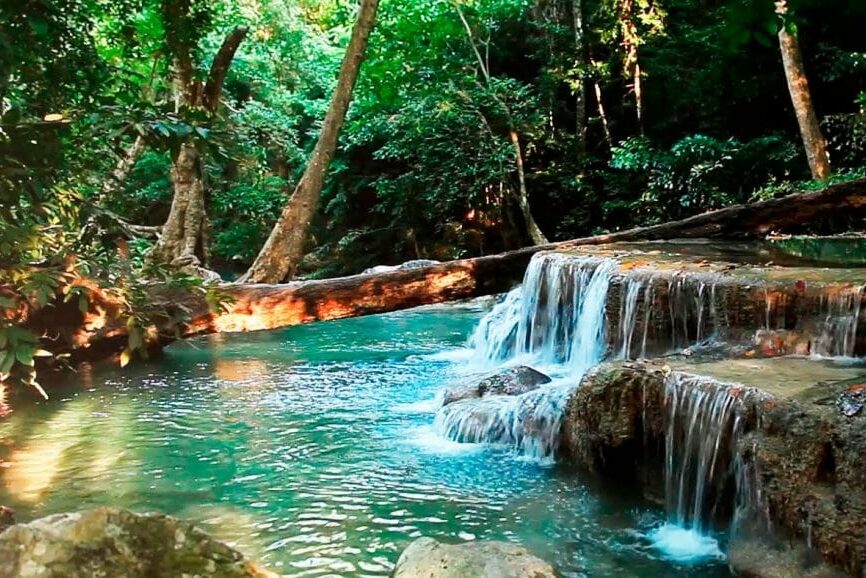
On 5th February 2010 and 14th June 2010, articles were published in Brisbane newspaper “The Courier Mail” about a potential cure-all for cancer. The articles told how researchers are investigating a possible miracle cure for cancer which they have found deep in the rainforests in North Queensland.
Located deep in the remnants of a 130-million-year old rainforest, scientists have identified a compound in the fruit of the native Blushwood shrub that seems to “liquefy and destroy cancer with no side effects.” This fruit extract may yet hold the secret antidote to cancer, Australia’s number one killer disease.
Dr Victoria Gordon, Chief Executive and Founder of Queensland Life Science Company Q-Biotics, which made this discovery, said the drug had successfully reduced or eliminated inoperable solid tumours in more than 200 pet dogs, cats and horses. The drug has been called EBC-46.
Dr Gordon said “many pet owners involved in veterinary trials of EBC-46 have watched the deadly tumours on their pets disintegrate within five to seven days of being treated. It is absolutely amazing to see this drug in action. The tumours almost shrink before your eyes.”
The taste of the Blushwood fruit is not pleasant. Inside the Blushwood nut there are 500 chemicals. Each one was studied chemically. To the great surprise of researchers, it was discovered one morning that a chemical – called EBC-46 – had dissolved tumour cells when left overnight in a petri dish. EBC-46 reinvigorates white cells trapped inside a tumour. It creates what is called a “neutrophil storm”. It drags powerful white cells from outside the tumour into the cancer cell to devour it.
The world-respected Queensland Institute of Medical Research is currently researching this cancer cure and may have human trials in the near future. Dr Gordon elaborated to say that a single dose injection of the EBC-46 extract is effective. The biggest tumour treated was one the size of a Coca Cola can in a dog. That animal is fully healed and in good health. Dr Gordon said EBC-46 had worked on skin cancers, such as carcinoma and melanomas, as well as bone cancer. (This is probably the hardest cancer to beat). It could be effective against breast cancer and prostate cancer. The rainforest plant can be grown in commercial quantities and pilot plantations have been established in a number of locations in Queensland. Because the compound is so active, only a small area of plantation is required for large scale supply of the active ingredient.
Brisbane newspaper “The Courier Mail” reported, on 12th June, 2013, that Q-Biotics will start human trials of EBC-46 within the next six months, hopefully before the end of 2013. EBC-46 has now been used to successfully treat solid cancer tumours in more than 300 cats, dogs and horses. Given that one single injection of EBC-46 achieves these phenomenal outcomes against solid cancer tumours we may be witnessing the arrival of a miracle cure for cancer.
This drug EBC-46 could be the saviour of the unique Australian animal, the Tasmanian Devil. This much loved Tassie Devil has been listed as an endangered species since a highly contagious facial tumour disease began spreading through the animal population in 1996. An audit found 80 per cent of the native devil population has been wiped out by the disease. The drug has been remarkably successful in treating facial tumours in other animals. It is hoped it will do the same for the Tasmanian Devil and save the species.
The Townsville, Queensland based Australian Institute of Marine Science has discovered 20 Sea Sponges that show enormous potential for cancer treatment. Sea Sponges have evolved over 800 million years fighting off bugs and organisms and can respond to challenges quickly. The Sea Sponge’s genome is four times that of the human genome and they have enormous potential in the way that they deal with cellular change. The TBL-12 Sea Cucumber from Vanuatu has saved numerous people from terminal cancer.
There are undoubtedly many more amazing cures for disease yet to be found in the Australian bush. It is known that the bark of one tree is a one hundred times stronger pain killer than morphine. Just one hectare (two and a half acres) of the Daintree Forest in far North Queensland is home to more flowering tree species than in all of North America. More than 80% of Australia’s native species are found nowhere else in the world.
Many of the World’s leading drugs are nature product derived. The cholesterol lowering drug, Lovastatin, is derived from a fungus. The breast cancer drug, Paclitaxel, is derived from the Pacific Yew tree. Taxol, a new treatment for ovarian cancer is derived from the Yew tree. Interestingly, Nature’s Sunshine Paw Paw Cell extracted from the indigenous Paw Paw tree of North America was found to have 300 times the anticancer potency of Taxol. Aspirin is derived from the White Willow tree. Quinine, the anti-malarial drug is derived from the bark of the Cinchona species of small trees, native to South America. Ephedrine, which is an anti-asthma agent comes from Ephedra Sinica, an ever- green shrub native to Asia. Pseudopterosins, with significant analgesic and anti-inflammatory properties, come from Caribbean Coral. Reserpine, the anti-hypertensive agent, comes from a sub-continental evergreen tree, Rauwolfa Serpentine. Morphine comes from the opium poppy and the list goes on and on.
This chapter further illustrates the amazing healing techniques of Mother Nature.
Extract from the book:
“Defeat Cancer … Like I Did Twice! “
Chapter 38

